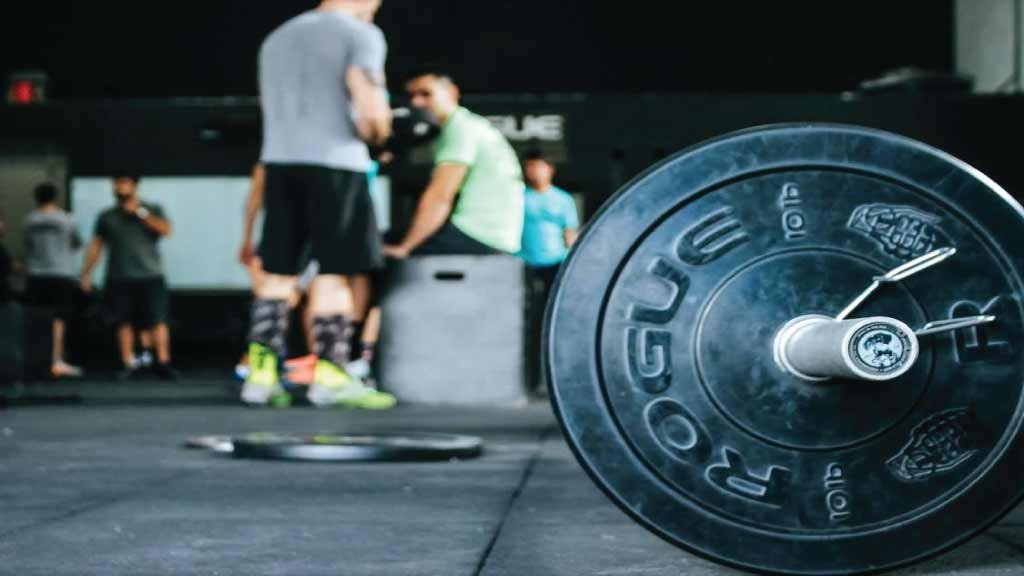WOD, or Workout Of the Day, is a core component of CrossFit® training. These high-intensity workouts are designed to enhance strength, conditioning, and metabolic rate. WODs vary daily and can be scaled to suit different fitness levels, offering a comprehensive fitness experience.
CrossFit WOD, a high-intensity fitness regimen, has gained immense popularity in recent years. Central to its methodology is the “Workout of the Day,” commonly abbreviated as WOD. These workouts are designed to test and improve overall fitness by incorporating elements of weightlifting, cardiovascular exercises, and gymnastics. In this guide, we delve into the structure, benefits, and considerations of CrossFit WODs.
Table of Contents
ToggleUnderstanding the Structure of a CrossFit WOD
A typical CrossFit WOD consists of various components, including warm-up, skill or strength work, the main workout, and cool-down. Each element serves a specific purpose in preparing the body for the intense workout ahead and aiding in recovery afterward.
Warm-Up: The warm-up phase is crucial for priming the muscles and joints, increasing heart rate, and improving mobility. It often includes dynamic movements such as jogging, jumping jacks, lunges, and arm circles.
Skill or Strength Work: Before diving into the main workout, participants may focus on honing specific skills or building strength in particular areas. This could involve weightlifting drills, gymnastics progressions, or practicing complex movements like squats, deadlifts, or pull-ups.
Main Workout (WOD): The centerpiece of any CrossFit session is the WOD itself. These workouts vary widely in duration, intensity, and focus, ensuring a diverse and challenging training experience. WODs may involve timed circuits, AMRAPs (As Many Rounds As Possible), EMOMs (Every Minute on the Minute), or prescribed sets and repetitions of various exercises.
Cool-Down: After completing the main workout, it’s essential to allow the body to gradually return to a resting state. Cool-down activities often include stretching, foam rolling, and gentle movements aimed at reducing muscle soreness and promoting recovery.
Benefits of CrossFit WODs
CrossFit WODs offer a multitude of benefits for participants of all fitness levels. Here are some key advantages:
1- Improved Fitness: By incorporating elements of strength, endurance, flexibility, and coordination, CrossFit WODs provide a comprehensive approach to fitness. Regular participation can lead to significant improvements in overall physical performance.
2- Community Support: CrossFit is known for its strong sense of community and camaraderie among participants. Working out alongside peers can provide motivation, accountability, and encouragement, enhancing the overall experience.
3- Efficiency: CrossFit workouts are designed to be highly efficient, often lasting 60 minutes or less. Despite their brevity, these workouts deliver maximum results by pushing participants to their limits and optimizing training time.
4- Adaptability: CrossFit WODs are scalable, meaning they can be adjusted to suit individual fitness levels and goals. Whether you’re a beginner or an experienced athlete, CrossFit offers modifications and alternatives to ensure everyone can participate safely and effectively.
5- Functional Fitness: CrossFit emphasizes movements that mimic everyday activities, such as squatting, lifting, pushing, and pulling. By training these functional movements, participants improve their ability to perform daily tasks with ease and efficiency, enhancing overall quality of life.
6- Mental Toughness: CrossFit WODs often push participants outside their comfort zones, challenging them both physically and mentally. Overcoming obstacles, pushing through fatigue, and achieving personal bests can build resilience, mental toughness, and self-confidence that extend beyond the gym.
7- Variety and Novelty: CrossFit workouts are constantly varied, incorporating a wide range of exercises, equipment, and formats. This variety not only keeps workouts exciting and engaging but also prevents boredom and plateaus, ensuring continued progress and adaptation.
8- Goal Setting and Achievement: CrossFit provides a structured framework for setting and achieving fitness goals. Whether it’s mastering a new skill, increasing strength or endurance, or competing in a local CrossFit competition, participants have tangible milestones to strive for, fostering a sense of accomplishment and motivation.
9- Social Connection: CrossFit communities foster strong bonds and friendships among members who share a common passion for fitness and wellness. Whether sweating through a tough workout together or cheering each other on during a challenging WOD, the supportive environment of CrossFit gyms cultivates a sense of belonging and camaraderie.
10- Adaptability to Various Environments: One of the unique aspects of CrossFit is its scalability and adaptability to different environments. Whether training in a fully equipped CrossFit box, a home gym, or even outdoors, participants can tailor their workouts to accommodate their surroundings, making fitness accessible and flexible regardless of location or resources.
Considerations for CrossFit WODs
While CrossFit WODs can be incredibly rewarding, it’s essential to approach them with caution and awareness of potential risks. Here are some considerations to keep in mind:
1- Proper Technique: Many CrossFit exercises involve complex movements that require proper form to perform safely and effectively. Prioritize technique over intensity, especially when learning new skills or lifting heavy weights.
2- Gradual Progression: Avoid the temptation to push too hard, too soon. Gradually increase the intensity and volume of your workouts to prevent overtraining and reduce the risk of injury.
3- Listen to Your Body: Pay attention to signs of fatigue, discomfort, or pain during workouts. Pushing through pain can lead to injury and setbacks. It’s okay to modify or scale back exercises as needed to prioritize safety and well-being.
4- Rest and Recovery: Adequate rest and recovery are crucial components of any training program. Incorporate rest days into your schedule to allow your body to recover and adapt to the demands of CrossFit training.
Nutrition and Hydration
In addition to the physical aspects of CrossFit training, nutrition and hydration play vital roles in performance and recovery. Proper fueling before and after workouts can optimize energy levels, support muscle growth and repair, and enhance overall well-being.
Pre-Workout Nutrition: Consuming a balanced meal or snack containing carbohydrates, protein, and healthy fats 1-2 hours before a CrossFit WOD can provide the necessary energy to sustain performance throughout the workout. Examples include oatmeal with Greek yogurt and fruit, a turkey and avocado sandwich on whole-grain bread, or a smoothie made with protein powder, spinach, and berries.
Hydration: Staying hydrated is essential for maintaining optimal performance and preventing dehydration during intense exercise. Aim to drink water consistently throughout the day and hydrate adequately before, during, and after your CrossFit WOD. Electrolyte-enhanced beverages may be beneficial for replenishing lost fluids and minerals, especially during longer or more intense workouts.
Post-Workout Nutrition: After completing a CrossFit WOD, refueling with a combination of carbohydrates and protein can support muscle recovery and replenish glycogen stores. Options include a protein shake with banana, chocolate milk, or a chicken and quinoa salad. Eating a nutritious meal or snack within 30-60 minutes post-workout can help optimize recovery and promote muscle growth.
Injury Prevention and Management
While CrossFit WODs can provide numerous benefits, they also carry the risk of injury, particularly when performed with poor technique or excessive intensity. To minimize the risk of injury and promote long-term health and fitness, consider the following strategies:
Proper Warm-Up and Mobility: Prioritize a thorough warm-up routine that includes dynamic stretches and mobility exercises to prepare the body for the demands of the workout. Pay attention to areas of tightness or stiffness and incorporate targeted mobility drills to improve flexibility and range of motion.
Progressive Overload: Gradually increase the intensity and volume of your workouts over time to allow your body to adapt and minimize the risk of overuse injuries. Avoid the temptation to push beyond your limits too quickly, and listen to your body’s signals to prevent overtraining.
Recovery and Rest: Incorporate rest days into your training schedule to allow for adequate recovery and repair of muscle tissue. Engage in activities that promote relaxation and stress reduction, such as meditation, yoga, or foam rolling. Adequate sleep is also essential for supporting recovery and optimizing performance.
Seek Professional Guidance: If you’re new to CrossFit or experiencing persistent pain or discomfort during workouts, consider seeking guidance from a qualified coach or physical therapist. A professional can assess your movement patterns, provide personalized modifications, and offer recommendations for injury prevention and management.
Conclusion About CrossFit WOD
CrossFit WODs offer a challenging and effective approach to fitness, combining elements of strength, endurance, and skill in a supportive community environment. By prioritizing proper nutrition, hydration, injury prevention, and recovery strategies, participants can maximize their performance, minimize the risk of injury, and achieve their health and fitness goals. With dedication, consistency, and smart training practices, CrossFit can be a rewarding and sustainable fitness journey for individuals of all ages and abilities.

